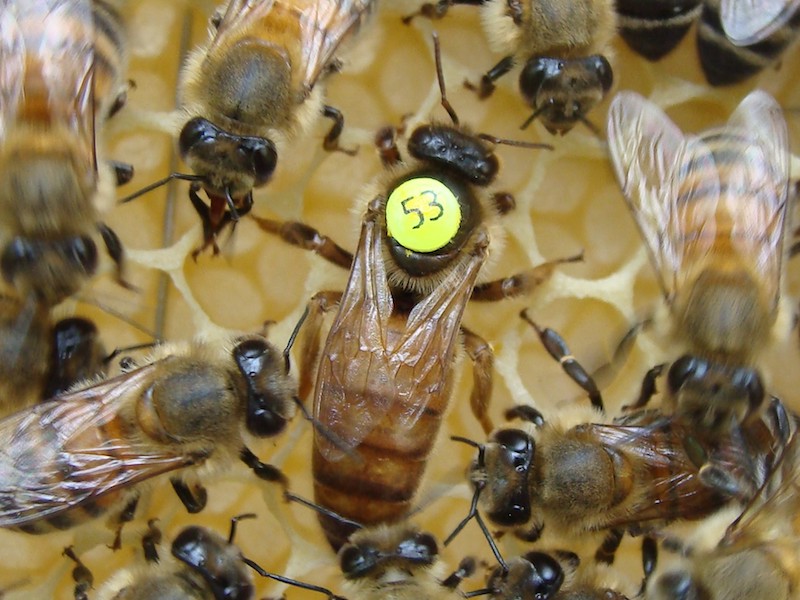Genetic selection: goals and difficulties
The main goal of beekeepers when following a genetic selection
program is to modify bees’ genome to highlight certain characteristics.
Such as colony’s gentleness to humans, productivity (based on the number
of kilos of honey, of pollen, of royal jelly), pollination rate,
disease tolerance or even the fact that bees stay on the frames when
beekeepers open their hives. On average, it takes over 10 years to
stabilize a genetic characteristic.
The difficulties of changing or isolating a genetic characteristic
include: finding a viable and rigorous scientific method, keeping the
results effective throughout time or to avoid developing inbreeding,
which in turn would reduce the brood’s viability.
A successful genetic selection
The greatest beekeeping selection success is the Buckfast race, a combinaison of European bees, named by Brother Adam (1898- 1996) after the monastery that hosted its scientific researches in south England.
How to test the effectiveness of you program
When controlling the efficiency of your genetic selection programs or
queen’s rearing, you can use several tests, here are two examples.
Firstly: the frozen brood test, created by geneticist W.C Rothenbulher in 1964, to fight American foulbrood,
also useful nowadays against varroa. The test is very simple, to test
the heritability of a gene you have to observe the colony’s capacity of
cleaning dead larvas. To do so, you take out a portion of brood and
freeze it for 24 hours, thereby killing the larvas, and put it back in
the hive. If, within the first 48 hours, the cleaning bees have taken
out all the dead larvas you can conclude the your genetic selection
program was effective.
The second test help you validate the effectiveness of a selection
program focusing on the increase of honey production. The goal is to
analyze whether your bees store nourishing sirop, the greater they store
in advance, the greater they will produce honey.

